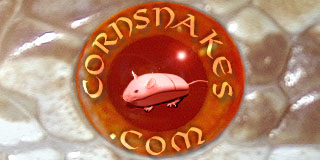pgr8dnlvr
An obsolete oldie...
Just wondering if any more has been found out about how motley and stripe work? Are they on the same allele? Has anyone figured out more rules as to how these genes act?
I know that motley/stripes are essentially het motley AND stripe, I know that motley is the more dominant trait and it often covers stripe completely, I know that snakes that LOOK like perfect motleys can hide the stripe gene.
I DON'T know -
Why I am not getting more mandelean results with my pair of motleys het stripe - 23 babies produced, patternwise all motley except for two perfect stripe. No motley stripes.
How to label my motley looking babies from pairings of motley and stripe parents <ie. motley het stripe if they look perfect motley, or het motley/stripes. or just plain motley and not mentioning stripe unless specifically selling to people I know are interested in breeding...>
Why I am not producing more motley/stripes?
Anyone with input or ideas, please lets DISCUSS!!
Here are pics of my two stripe babies -
I know that motley/stripes are essentially het motley AND stripe, I know that motley is the more dominant trait and it often covers stripe completely, I know that snakes that LOOK like perfect motleys can hide the stripe gene.
I DON'T know -
Why I am not getting more mandelean results with my pair of motleys het stripe - 23 babies produced, patternwise all motley except for two perfect stripe. No motley stripes.
How to label my motley looking babies from pairings of motley and stripe parents <ie. motley het stripe if they look perfect motley, or het motley/stripes. or just plain motley and not mentioning stripe unless specifically selling to people I know are interested in breeding...>
Why I am not producing more motley/stripes?
Anyone with input or ideas, please lets DISCUSS!!
Here are pics of my two stripe babies -
pgr8dnlvr said:Here is an updated pic of last years perfect stripe she is growing great and eating large fuzzies/small hoppers
Here is the baby boy from this year....
Here is a pic of the rest of the clutch from this year -
There ended up being 1.2 snow mot ph stripe, 2.3 amel mot ph snow stripe, and 1.0 amel stripe!
Here is a link to a discussion about last years clutch -
http://www.cornsnakes.com/forums/showthread.php?t=67521
Here is a picture of another clutch from a motley bred to a stripe parent -
There were 2.3 Amel motley het caramel stripe, 5.3 Ultramel motley het caramel stripe, 2.0 ultramel motley/stripes het caramel, 1.0 amel motley/stripe het caramel!
The last was a normal pattern bred to a stripe pattern -
1.1 normal het snow, motley/stripe - 3.2 snow mot het stripe, 0.1 Anery motley het snow, stripe - 3.0 Normal motley het snow, stripe - 0.3 snow het mot/stripe - 2.0 amel motley het snow, stripe - 1.0 amel het anery motley/stripe
PLEASE ADD YOUR INPUT!!
Thanks!
Rebecca









